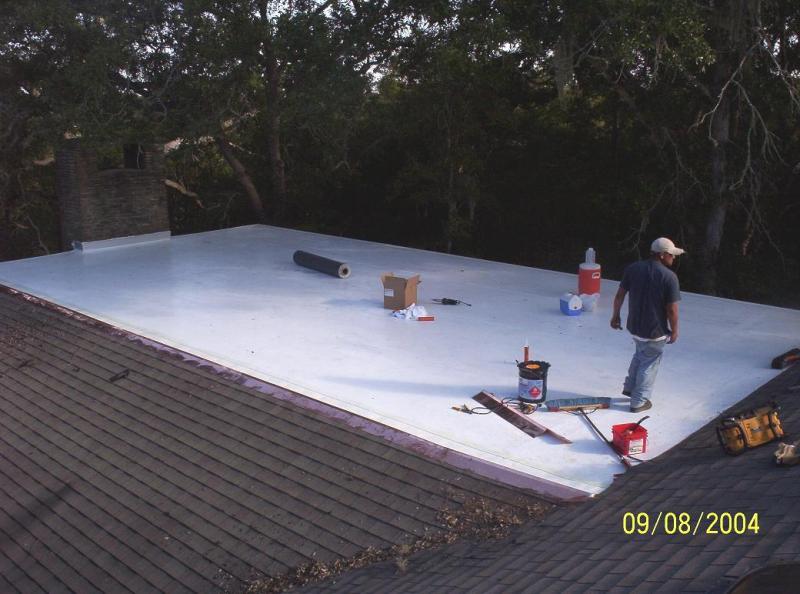 Shingles are one of the most common types of roofing material that make up the external layer of the covering system. Their very nature does create a problem of having numerous seams on the roof. Even interlocking tiles cannot provide a water-tight seal. Thankfully, there is underlayment sheeting to provide a secondary level of water protection.
Shingles are one of the most common types of roofing material that make up the external layer of the covering system. Their very nature does create a problem of having numerous seams on the roof. Even interlocking tiles cannot provide a water-tight seal. Thankfully, there is underlayment sheeting to provide a secondary level of water protection.
Function
During strong rains and heavy snow, water has the potential to penetrate the top layer of the roof through the crevices between the shingles. Once water passes through, it can easily soak the plywood decking or sheathing and make its way into the insulation layer and untreated cause damage to the underlying structure.
The underlayment serves as a secondary level of protection to prevent water and moisture from getting through the decking and other wooden structures underneath the shingles. During repairs and construction, the underlayment can also be used as a temporary covering for the exposed areas of the entire system. This thick fiber-reinforced sheet can provide sufficient temporary protection from both wind and rain.
Types
Due to the necessity of finding material that is durable with a high water resistance, various types of underlayment have been developed. Despite the variety of materials that are used, the concept remains the same – a fiber-reinforced sheet that is thin and lightweight but can effectively repel water.
- Asphalt Saturated Felt – This is also known as tar paper and is reinforced by either organic or inorganic substrate. Inorganic felt often used fiberglass which was very tolerant to fire, while organic cellulose was later used for reinforcement and lower cost. This type of felt comes in 15 and 30 pound variations.
- Polymer Modified Bitumen – This type of material is fast replacing traditional roofing felt due to its self-healing qualities, meaning that holes from fasteners and staples seal well and reduce the possibility of leaks in these areas. Some of the material has a self-adhering quality, which eliminates the need for fasteners and allows for individual layers to be joined on the adhesive joints which makes installation easier.
- Synthetic Polymer – Some underlayment sheets are made from polypropylene or polyethylene which are considered synthetic materials. Unlike traditional felt, it is considerably more durable and lightweight and comes in a wide variety of sizes, reducing the number of seams where water could infiltrate.
Installation
While an underlayment can provide adequate water resistance, proper installation is the key to its effectiveness. In lower sloped roofs, it should overlap a minimum of 19 inches on the seams while two inches is adequate for a more steeply sloped roof. It should also be fixed along the eaves and then raked using a metal edge to protect the edges of the sheathing.
In wind prone areas, the use of a proper fastener is crucial to the performance of the underlayment. A wind strip may be installed horizontally across the sheeting to achieve a secure hold. Alternatively, a fastener with a plastic cap may also be used since it can provide better wind resistance than staples.
Underlayment is a key material component that must be included in the roofing system. Doing so has the potential to decrease severe leaks and significantly reduce the lifespan of the housetop covering. Hopefully this article has provided some key information about the importance of this component, the various types available, and some installation considerations!
For Any Roof Houston Needs, Call Schulte Roofing!
Do you need a roof Houston company to help with important decisions about underlayment? Call Schulte Roofing at 800-367-7663 to help greater Houston area customers with all roofing needs!
